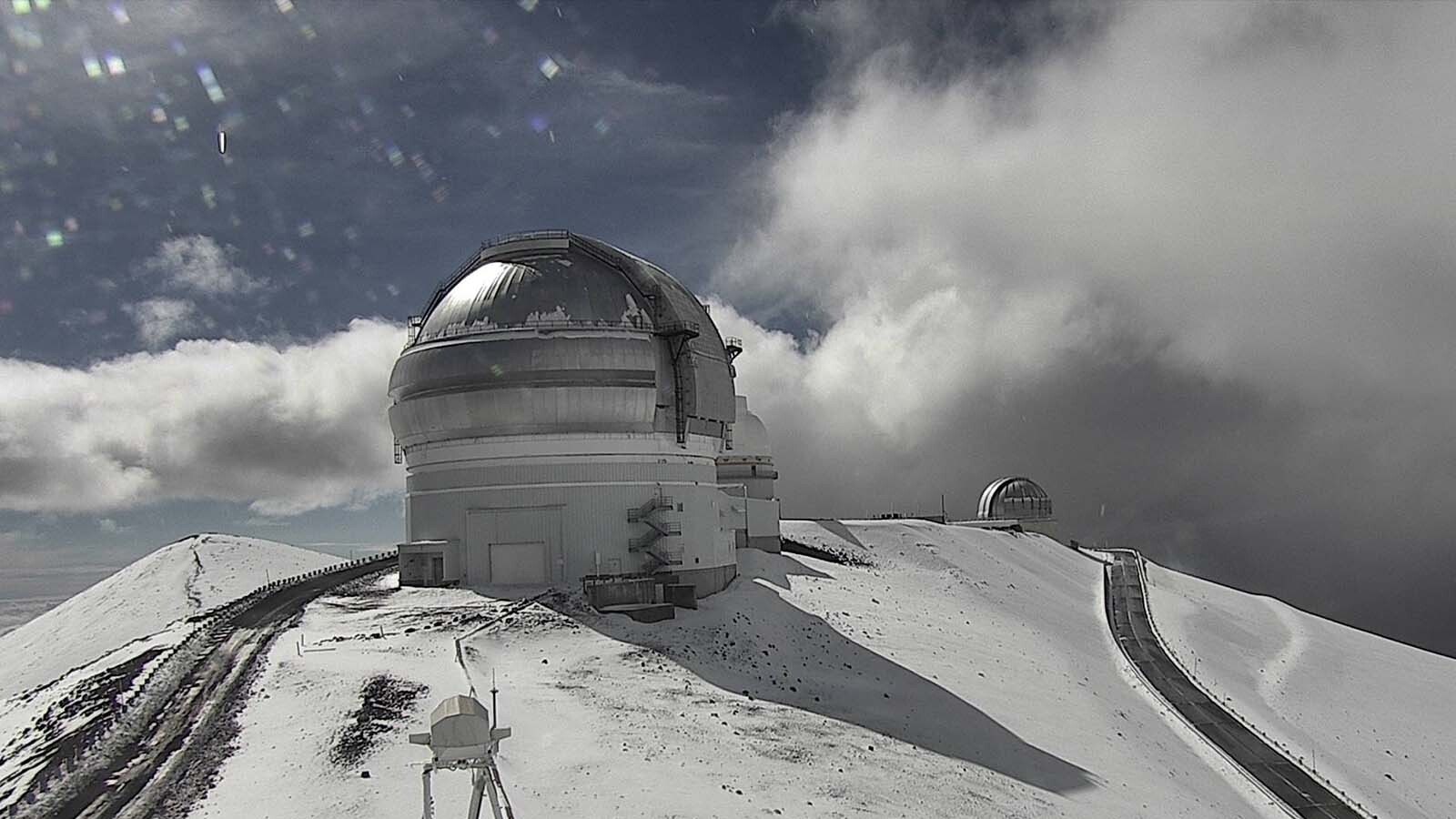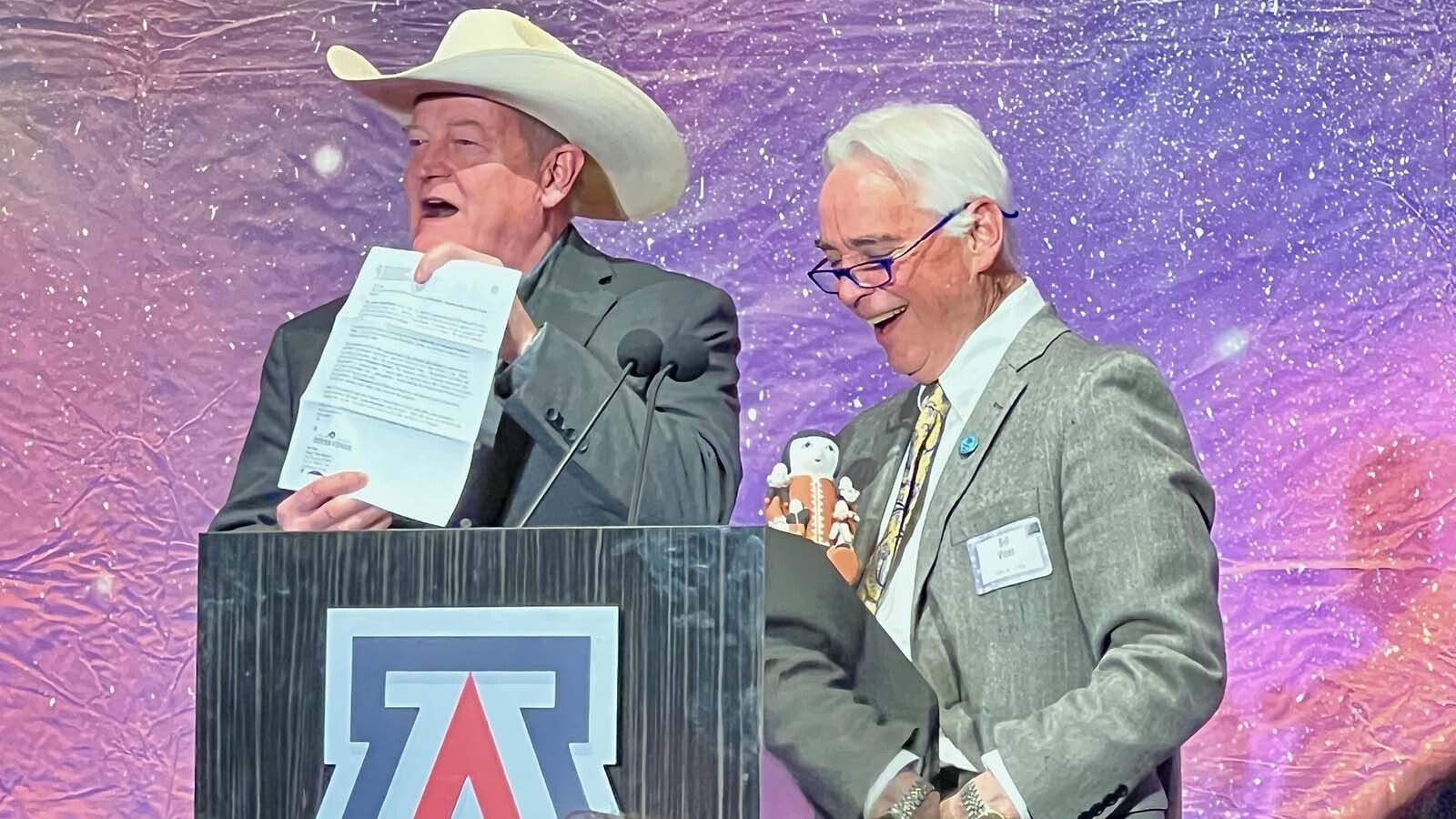The latest look inside Wyoming's largest resident defies the tried-and-true method of dating dinosaurs, and it's not as simple as counting rings.
And at 108 feet long, Jimbo the Supersaurus found near Douglas, Wyoming, remains the largest, most complete sauropod ever discovered, but a new scientific study had determined it’s not as old as first thought.
The study, summed up in a report titled "Seis-ing up the Super- Morrison Formation Sauropods," used bone osteohistology to determine the age of the largest dinosaurs found in North America. It's enormous insights in super-sized dinosaurs was possible in part from the accessibility to the fossils of Wyoming’s largest dinosaur.
"Every one of these analyses can only happen because of these great museums letting scientists study their fossils further," Cary Woodruff, the lead author of the paper and Curator of Vertebrate Paleontology at Frost Science in Miami, Florida, told Cowboy State Daily. "It shows that these specimens are not even close to being done to revealing their secrets."
Super-Sized
Woodruff's research focused on two specimens of large Morrison Formation sauropods, among the biggest dinosaurs ever found. The first was Diplodocus hallorum found in New Mexico, a larger version of Wyoming's world-famous Dippy.
The second specimen was Jimbo, a 108-foot-long Supersaurus vivianae found near Douglas. The 30% complete skeleton of one individual, on display at the Wyoming Dinosaur Center in Thermopolis, is the largest dinosaur ever found in Wyoming and among the world's largest, most complete dinosaur specimens.
Both specimens are sauropods, long-necked herbivores that lived during the Late Jurassic Period, roughly 150 million years ago. Their immense size and plethora of fossils made them ideal targets for Woodruff's internal investigation.
"These are two gigantic dinosaurs with all these questions about their size," he said. "Were they really old dinosaurs, or just two kinds of dinosaurs that got really big? So, we tested that by looking at the inside of these animals' bones to tell how old they were when they died."
Osteohistology is the examination of a bone's interior structure. Woodruff and his colleagues hoped their study would give them a timeline for how long it took for these giants to reach their immense size.
"Bone is a living tissue," he said. "It's always healing and checking in on itself, which we call remodeling. Sauropods basically obliterate through all of this sort of checks and balance system in the bones throughout their life. Their bones were growing so fast, and basically always."
The only way to look inside a perfectly preserved dinosaur bone is to cut it open, which is sacrilegious to many museums and paleontologists. Luckily, Woodruff found Wyoming's Supersaurus pre-sliced for his benefit.
Perfect Cut Of Ribs
Jimbo was excavated from a Douglas-area ranch owned by Howard and Helen Miessler. Its immense fossils were donated to the Wyoming Dinosaur Center to ensure they would permanently remain in Wyoming and be available for future scientific inquiry.
When Woodruff wanted to spend quality time with Jimbo, he set his sights on two portions of its skeleton. When determining an age, dinosaurs aren't too different from trees.
"The way we normally determine the age at death of a dinosaur is counting what we call lines of arrested growth in certain bones," he said. "They're the same as tree rings. Counting the tree rings tells you how old the tree was. It can do the same thing in other in living animals, including the big sauropods."
Previous studies on dinosaur age focused on the lines of arrested growth preserved in leg bones, like the tibia and femur. Jimbo's femora have not been found, but both of its tibiae were intact, making it a perfect candidate for traditional methods.
But Woodruff wasn't focusing on the legs. For this research, he was eyeing the chest.
"A German colleague of mine found out that certain parts of the ribs preserve the most intact chunk of these growth rings we can see," he said. "It's not the whole growth record, but it's basically the best."
Once again, Jimbo proved to be a perfect candidate for the study. Thanks to previous studies on the internal structures of sauropod bones, one of Jimbo's ribs had already been sliced up for osteohistology research.
"The Wyoming Dinosaur Center has those sections on display," he said. "When you say, 'Hey, I like to cut up your dinosaur, please,' a ton of museums say no. But the Wyoming Dinosaur Center knew the potential of the things we could learn and the questions we could ask."

Overgrowing Itself, Shaq-Style
With the pre-sliced Jimbo ribs at their fingertips, Woodruff and his colleagues attempted to count the lines of arrested growth. However, they found that Jimbo wouldn't give up its age so easily.
Bone density and structure change over time, so it's easy for paleontologists to determine whether a bone came from a fast-growing youngster or a slow-growing adult. But the interior of the Supersaurus rib was so thoroughly old that there was hardly a trace of its youth.
"This Supersaurus was so old that the inside of those ribs had almost completely remodeled," he said. "Almost all of the growth series had been obliterated. We were literally only left with like the tiny little veneer of the outside so that we could see a couple of lines."
Using a process called retro-calculation, the paleontologists determined the size of the space between the lines of arrested growth and counted their way back to the center of the sliced rib. Woodruff admitted it “wasn't perfect,” but they wanted to get an approximate age for the immense dinosaur, if only to showcase potential issues with this method of determining a dinosaur's age.
The final number was shocking. Using this method, determined by the lines of arrested growth, Woodruff determined that Jimbo could have been about 225 years old when it died.
"That number can't be accurate and can't be right," he said. "That points to Supersaurus growing very, very slowly, which we know they didn't."
To emphasize that point, Woodruff compared Supersaurus to basketball superstar Shaquille O'Neal.
"Shaq isn't the oldest person on the planet, but he's a huge person," he said. "Just because you're big doesn't mean you're old."
Super-Size, Super-Fast
While Wyoming's Supersaurus might have been keen to hide its age, Woodruff found New Mexico's Diplodocus hallorum more accommodating. Using the same methods on the second super-sized specimen, he determined an approximate age of 60 years.
This age was simultaneously more believable and more incredulous. Diplodocus hallorum was around 110 feet long, but it would've hatched from an egg roughly the size of a grapefruit.
"It's showing that these were incredibly fast-growing animals," he said. "These were animals in excess of 100 feet long and 50-plus tons in body mass, and yet all of these dinosaurs grow really, really fast."
Woodruff's research complements other studies into dinosaur growth rates. A recent study of bite marks on Jurassic fossils, conducted by paleontologist Mathew Wedel, found that sauropods' "live fast, die young" life cycle was a crucial part of the Late Jurassic ecosystem.
Supersaurus and Diplodocus hallorum are the exceptions to the prehistoric rule. Woodruff described their immense size as "a luxury."
"The bulk of dinosaur skeletons that we see in museums don't represent 'fully grown animals' because dying of old age is a very rare luxury in nature," he said. "These really big, really old animals are really rare. And these two specimens weren't giant teenagers. They were indeed skeletally mature animals."
One Answer, More Questions
Supersaurus may have been super-sized, but it wasn't necessarily super-old. That's why Woodruff is eager to fill in the gaps of its gigantic growth as the next step in sauropod studies.
"We've never found, to our knowledge, a teenage Supersaurus," he said. "So, what might that look like? How old would these teenagers be? We have three Supersaurus individuals now, and they're all about the same size, give or take a few meters. Because these three were a similar size, does that mean they're a similar age?"
Understanding more about the growth of Jimbo Supersaurus will shed more light on the lifecycles of dinosaurs, which are still hotly contested among paleontologists. One particularly fractious debate is whether specimens of a small tyrannosaur from the Late Cretaceous North America are a separate species or teenage T. rexes.
Woodruff acknowledged that his insight into the age of super-sized sauropods raised more questions than it answered. It's the kind of discovery that will keep him and his colleagues busy for many years.
"I think it asks a lot of it raises really interesting questions about these really big dinosaurs," he said. "You hatch out an egg, potentially the size of a grapefruit, and in 60 years you're one of the biggest animals ever.
“How can you even grow that fast? How much food do you need? How do you breathe? All of these amazing things help us understand how (Supersaurus) and these other dinosaurs achieved sizes never before seen on Earth."
Andrew Rossi can be reached at arossi@cowboystatedaily.com.








